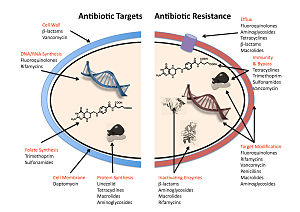The bacterium Pseudomonas
aeruginosa can thrive in
environments as different as the moist, warm tissue in human lungs, and the
dry, nutrient-deprived surface of an office wall. Such adaptability makes it
problematic in healthcare.
According to Blanca Barquera: "These organisms are
able to live everywhere, under conditions with an enormous variety of food
supply, salt levels, temperature, acid/base level, and oxygen level. And we
have to ask -- how can they do this?"
She adds: “In order for the organisms to survive in so
many different environments, the interior of the cell must remain a hospitable
place for the biochemistry of life, regardless of what happens outside. And
there are proteins in the membrane that are responsible for this."
Transport proteins make up the active interface between
the cell and the environment, and among the most important of these proteins
are those which transport ions -- atoms or molecules with a net positive or
negative electrical charge -- into and out of the cell, Barquera said. Ion
transport proteins maintain favorable concentrations of ions inside the cell,
and also are at the heart of energy production. Transport of positively charged
hydrogen and sodium ions, called cations, create gradients that provide energy
for diverse cellular processes, such as cell motility, import of nutrients, and
extrusion of chemicals that are toxic to the cell.
In the current project, "Control of Na+ and H+
transport in bacterial adaptation," researchers will seek to understand
how transport proteins that move hydrogen and sodium cations through the cell
membrane allow Pseudomonas to adjust its metabolism to different
environmental conditions.
Researchers will look at several transport proteins
including NQR, which moves sodium from the interior to exterior of the cell;
NUO, which moves protons from the interior to the exterior of the cell; and
sodium/proton anti-porters, which exchange ions to maintain constant pH and
ionic concentrations inside the cell.
For further details see: Rensselaer
Polytechnic Institute (RPI)


Posted by Dr. Tim Sandle



_(5).jpg)















